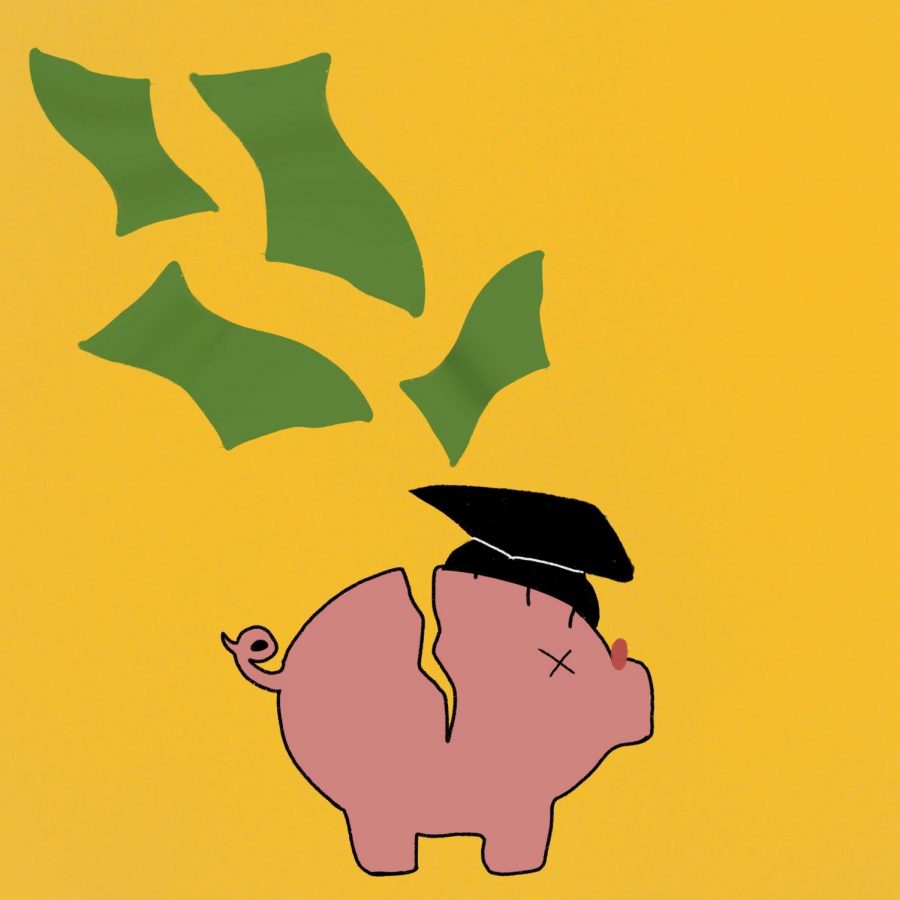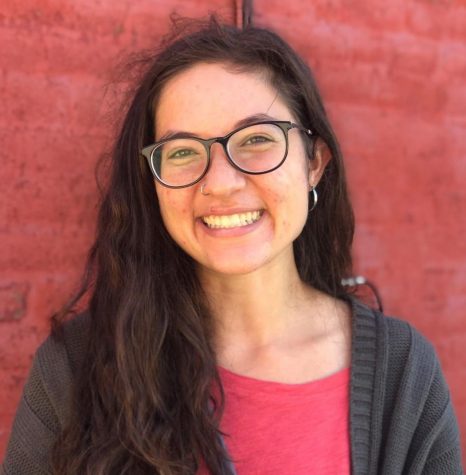Opinion | University application fees are classist
November 4, 2020
Whether it’s undergrad or graduate school, university application season is incredibly stressful. There’s the burden of testing, sending transcripts, and writing essays and personal statements. There’s also the burden of application fees which — for some students — can amount to hundreds, if not thousands of dollars.
There are two main arguments in defense of university application fees — the first being that universities need application fees for revenue, and the second being to filter out applicants who aren’t seriously interested in attending the institution. But in the big picture, application fees hardly account for any significant portion of university revenue. And while application fees are likely to help deter students uninterested in the school, the fees also put up a momentous barrier for students who are interested in the institution, but cannot find the means to pay to apply. University application fees — for undergraduate and graduate degrees — are classist. They should be abolished.
Applying for degrees, whether undergraduate or graduate, is ridiculously expensive. Undergraduate students paid an average of $44 per school application in 2019. Stanford had the highest application fee for undergraduate students in the United States — $90. But it’s not just elite universities charging an arm and a leg for applications. Many public state institutions — like University of Washington, University of Delaware, University of Maryland and University of Texas — charged $75 or more per undergraduate application.
Though there are no statistics on graduate school application prices, those fees are often even higher. Graduate schools applications often cost even more. Swarthmore College, in its medical school application handbook, suggests students should expect to spend at least $2,800 on their medical school applications. The University of Minnesota charges students applying to any of its literary arts programs and, in very fine print, clarifies that the English department cannot waive any application fees. Florida Institute of Technology estimates the average student applying to law school will spend at least $900 on application fees alone — this doesn’t include the price of the LSAT.
An increasing amount of undergraduate programs have become test-optional over the past five years, though most still require standardized admissions tests. Some institutions have suspended standardized testing for the 2021-22 application cycle due to COVID-19, but there’s no indication that once the pandemic is over, the test requirements won’t resume. And these tests are expensive. The GRE, required for most graduate programs, cost $205 per test. The LSAT — required for law school admission — costs $200 per test, an the MCAT — required for medical school — costs $320 per test. Some students take these admissions exams more than once. Both the SAT and the ACT cost just under $65 with the essay portion, which most undergraduate universities require for admission.
And even after the tests, there are remaining fees connected to the scores. Undergraduate students have to pay between $12 and $16 to send their standardized test scores to colleges. Most universities also charge a transcript fee for graduate students and transfer students, which is often no more than $10, but can add up quickly. Standardized test prices and processing fees are often out of university control, but these fees combined with the application fees could be way outside a student’s budget.
Many — though notably not all — universities offer a fee waiver for applications, but the process of obtaining one is a burden within itself. Most universities require students, or their families, to be receiving some sort of government assistance — whether it’s in the form of food stamps, subsidized public housing or the free and reduced lunch school program. Income-wise, a student in a family of four with a total income of about $50,000 or less would be eligible for a fee waiver.
This is problematic for many reasons, the most obvious being that a low-income student shouldn’t have to jump through hoops to be able to afford to apply to college. But also, a student in a family of four with a household income of over $50,000 a year still might not have $900 laying around to apply to graduate school. It’s also not a university’s place to judge accessibility based on factors like income and level of government assistance, when the student’s individual financial situation isn’t clear.
Some universities, like Pitt, waive undergraduate application fees for students who visit campus. Waiving fees for campus visits once again signals the classist ideology that, if students are interested in attending a school, they’ll schedule a visit to campus. This process assumes that all students have the resources — specifically the time and money — to visit campus in the first place. If universities are really concerned with filtering out applicants who aren’t seriously looking to attend the school, they’d be wise to just tack a few extra short essay questions onto the application. I know that would be more than enough to keep me from applying somewhere I wasn’t interested in attending.
Tuition fees also hardly account for any significant portion of university revenue. University of California-Los Angeles made more from application fees than any other American University in 2018 — almost $6.8 million. This might seem like a lot, but the university’s total revenue was $7.7 billion in 2018. This means that application fees made up less than .09% of total revenue. Harvard, for example, also made far more from application fees than most other American universities in 2018 — $2.9 million. Harvard had a total revenue of $5.2 billion that year, meaning its application fees made up less than .06% of total revenue that year.
Class barriers often make college education most accessible for upper-class students, less accessible for middle-class students and the least accessible for working-class students. This disparity starts long before application fees and continues far past application fees, but the point is that application fees shouldn’t be yet another barrier.
Universities love to flaunt their commitment to equal opportunity and accessibility. The truth is, we’ve got a long way to go if we want to even the playing field between the upper-class, middle-class and working-class students. This includes better financial aid and scholarship opportunities, cheaper textbook options and ultimately finding ways to cut back on tuition prices. These are institutional problems that cannot be fixed overnight, but we’ve got to start somewhere. If universities really care about equal opportunity, the least they could do — the absolute bare minimum — would be to stop charging application fees.
Leah primarily writes about mental health and the spices of the world. Write to them at [email protected].









